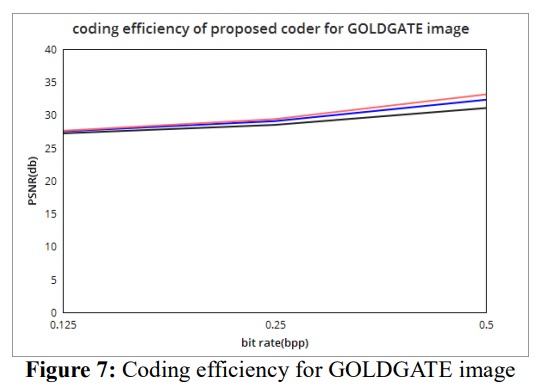Multiple Description Coding for Efficient, Low-Complexity Image Processing
DOI:
https://doi.org/10.54741/asejar.2.5.8Keywords:
coding effect, low complexity, image processingAbstract
This study uses Set Partitioned Embedded bloCK based coding, which is quick, effective, straightforward, and often used, to code several descriptions of changed images. Using images' discrete wavelet transform (DWT), this type of coding can be used to its fullest capacity. To enable accurate transmission of the image over noisy wireless channels, two associated descriptions are created from a wavelet processed image. These associated descriptions are broadcast across wireless channels using the set partitioning technique and SPECK coders. The quantity of descriptions received affects the quality of the image reconstruction at the decoder side. The quality of the reconstructed image improves as the number of descriptions received at the output side increases. When a description is lost from the various descriptions, the receiver can still guess it by using the correlation between the descriptions. Even when half of the descriptions are lost in transmission, the simulations run on an image in MATLAB still produce respectable performance and outcomes.
Downloads
References
Y. Wang, M.T. Orchard, V.A. Vaishampayan, & A.R. Reibman. (2001). Multiple description coding using pairwise correlating transforms. IEEE Transactions on Image Processing, 10(3), 351-366.
S. D. Servetto, K. Ramchandran, & V.A Vaishampayan. (2000). Multiple description wavelet based image coding. IEEE Transactions on Image Processing, 9(5), 813-826.
V. K. Goyal & J. Kovacevic. (2001). Generalized multiple description coding with correlating transforms. IEEE Transactions on Information Theory, 47(6), 2199-2224.
V.K. Goyal. (2001). Multiple description coding: Compression meets the network. IEEE Signal Processing Magazine, 18(5), 74-93.
A. Said, & W.A. Pearlman. (1996). A new fast and efficient image codec based on set partitioning in hierarchical trees. IEEE Transactions on Circuits and Systems for Video Technology, 6(3), 243–250.
Islam, & W.A. Pearlman. (1999). An embedded and efficient low-complexity hierarchical image coder. Available at: https://www.ecse.rpi.edu/~pearlman/papers/vcip99_ip.pdf.
W.A. Pearlman, A. Islam, N. Nagaraj, & A. Said. (2004). Efficient, low-complexity image coding with a set-partitioning embedded block coder. IEEE Transactions on Circuits and Systems for Video Technology, 14(11), 1219–1235.
K. Sayood. (2000). Introduction to data compression. (2nd ed.). Academic Press: Morgan Kaufmann Publishers.
G. Strang, & T. Nguyen. (1996). Wavelets and filter banks. Cambridge: Wellesley-Cambridge Press.
Li Ze-Nian, & Drew Mark S. (2004). Image compression standards in fundamentals of multimedia. Prentice-Hall.
Lewis A. S., & Knowles G. (1992). Image compression using the 2-D wavelet transform. IEEE Transaction on Image Processing, 244-250.

Downloads
Published
How to Cite
Issue
Section
ARK
License
Copyright (c) 2023 NKEMDILIM Olusegun P.

This work is licensed under a Creative Commons Attribution 4.0 International License.
Research Articles in 'Applied Science and Engineering Journal for Advanced Research' are Open Access articles published under the Creative Commons CC BY License Creative Commons Attribution 4.0 International License http://creativecommons.org/licenses/by/4.0/. This license allows you to share – copy and redistribute the material in any medium or format. Adapt – remix, transform, and build upon the material for any purpose, even commercially.










